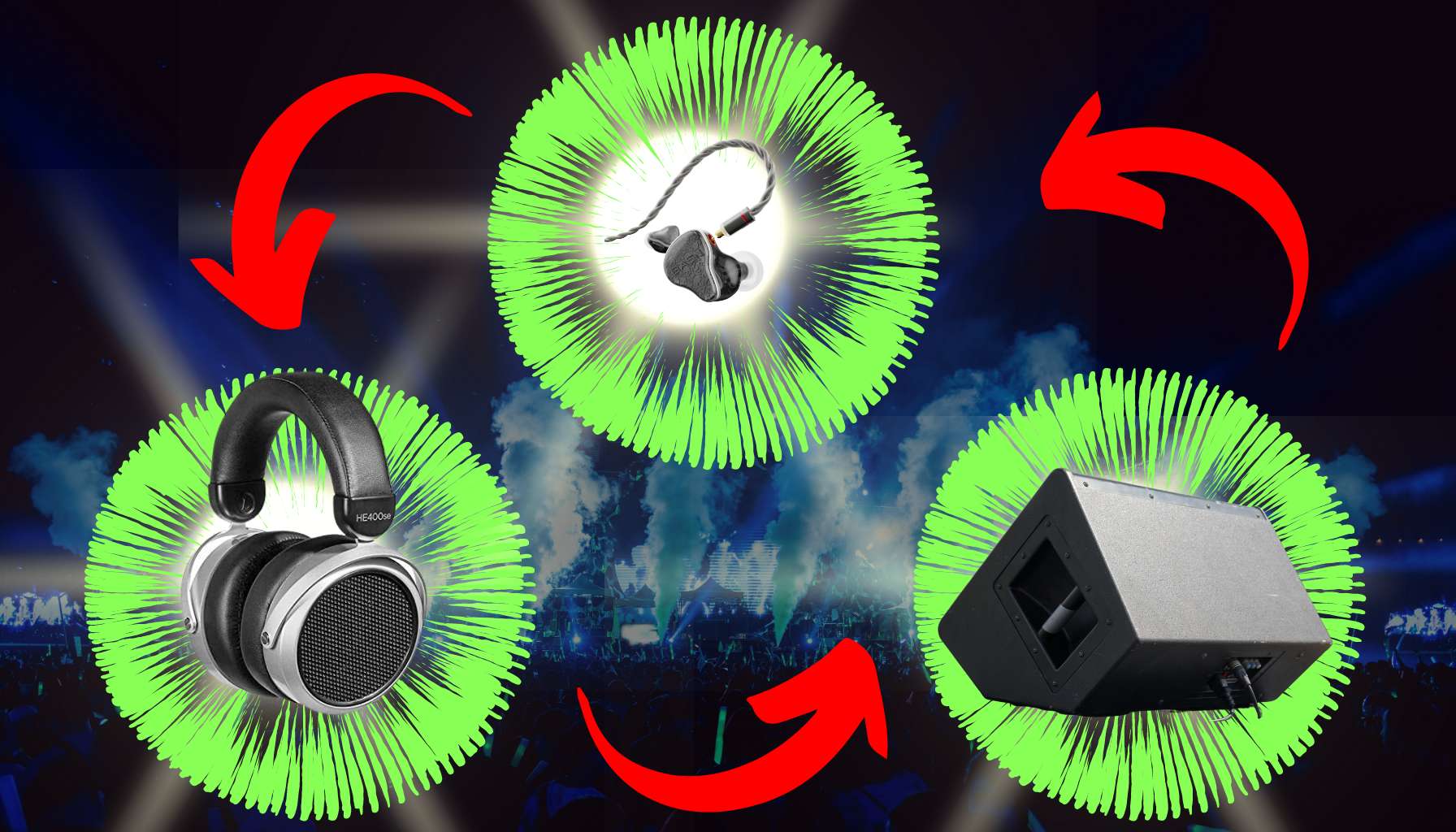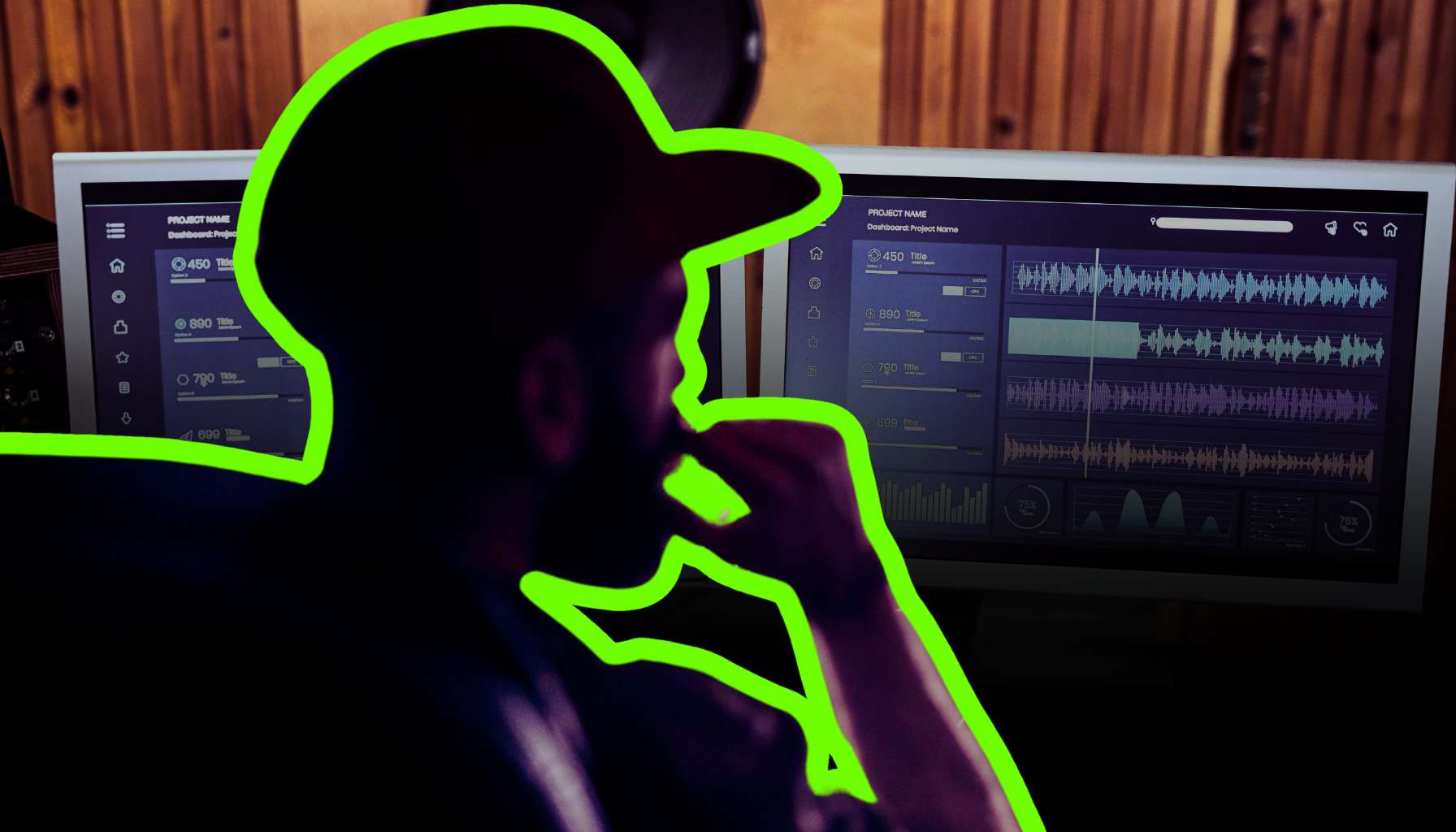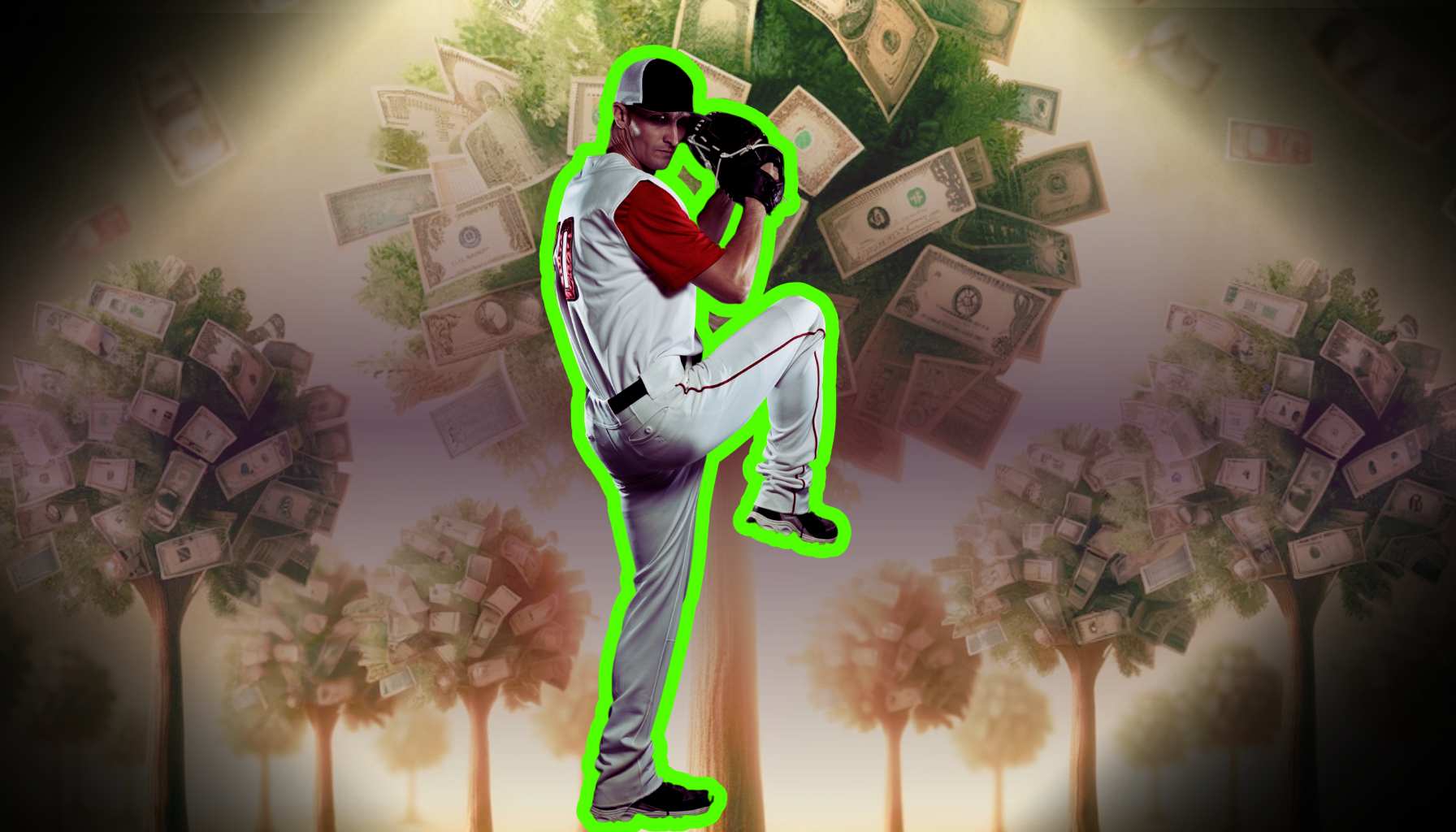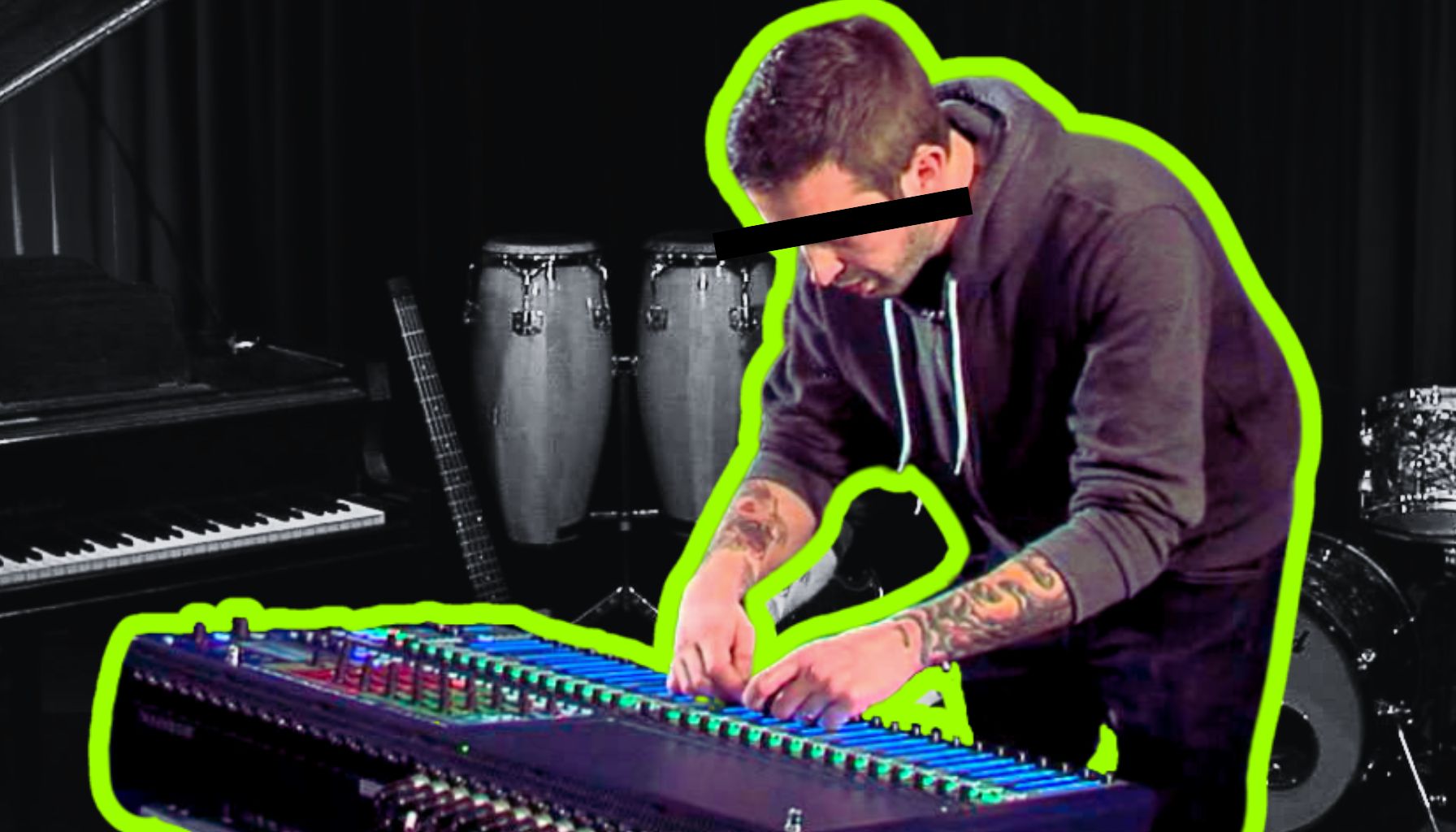The Origin and Evolution of Dancehall Music
Let’s take a beat and rewind back to the late 1970s in Jamaica, where dancehall music first got the party started. Unlike its reggae predecessor, which often crooned about love and social issues, dancehall was the extroverted cousin, busting out bolder, brasher sounds that were a call to get up and dance, not just nod along pensively. This genre’s evolution has been as dynamic as its rhythms, from the vocal stylings of Yellowman to the digital revolutions of King Jammy, leading us to today’s chart-topping hits from artists like Sean Paul and Shaggy.
Auditively speaking, dancehall is more than just music – it’s a body-moving, hip-swaying language. It’s the dancefloor’s most persuasive argument, inviting even the most rhythmically challenged individuals to step into the groove. That being said, capturing the essence of that infectious rhythm and distinctive groove is nothing short of essential when creating dancehall beats.
Defining the Unique Characteristics of Dancehall Rhythm and Groove
The magic of the dancehall groove lies not just in the notes played, but the spaces between them—the syncopation, the dropped beats, and the swagger that henceforth can only be termed as ‘dancehall attitude.’ Contrary to the straight-laced metronome of some other genres, dancehall rhythm swaggers in with a compelling swagger that defies you not to move.
This unique rhythm and groove that dancehall boasts is its signature, the stamp that says, “Made in Jamaica,” with pride and rhythmical prowess. It’s the spicy jerk seasoning to bland beats, the rum punch at a dry party. Hence, when crafting beats tailored for dancehall, it’s paramount to drape them in the traditional garb of its characteristic rhythm.
As we thrust forward, gyrating into the heart of production, the unmistakable beats that have become synonymous with dancehall serve as our foundation—our sonic bedrock. But before we get ahead of ourselves and start hammering out rhythms, let’s first ensure we understand the fundamentals. The genuine shakedown begins with grasping the tempo and swing that hallmark dancehall.
Understanding Dancehall Tempo and Swing
In the next phase of our rhythmical voyage, we’ll dissect the anatomy of dancehall tempo. Sweeter than sugar cane, these beats have a tempo that’s brisk yet not hurried; lively yet unmistakably relaxed. They possess a swing that’s as infectious as laughter, a rhythm that pulses to the cadence of island life—laid back but lively.
Exploring these foundational patterns serves to inform us about the essential drum patterns that are quintessential to dancehall music, which will be the focus of the ensuing chapter. From the iconic ‘dem bow’ to the dance-floor-ready ‘steppers,’ these patterns are the secret sauce in our sonic jerk chicken. But remember, even the best sauce needs the right base, in this case, the indefatigable and ever-present bass that is the backbone of a dancehall groove.
Armed with this knowledge, we won’t just be making music; we’ll be brewing a rhythmic potion, distilling the essence of the Caribbean, bottle by bottle, beat by beat. And as we groove our way forward, toes tapping, hips swaying, we’re not just following a blueprint; we’re writing our dancehall thesis, one thunderous bassline at a time.,### The Origin and Evolution of Dancehall Music
Let’s take a beat and rewind back to the late 1970s in Jamaica, where dancehall music first got the party started. Unlike its reggae predecessor, which often crooned about love and social issues, dancehall was the extroverted cousin, busting out bolder, brasher sounds that were a call to get up and dance, not just nod along pensively. This genre’s evolution has been as dynamic as its rhythms, from the vocal stylings of Yellowman to the digital revolutions of King Jammy, leading us to today’s chart-topping hits from artists like Sean Paul and Shaggy.
Auditively speaking, dancehall is more than just music – it’s a body-moving, hip-swaying language. It’s the dancefloor’s most persuasive argument, inviting even the most rhythmically challenged individuals to step into the groove. That being said, capturing the essence of that infectious rhythm and distinctive groove is nothing short of essential when creating dancehall beats.
Defining the Unique Characteristics of Dancehall Rhythm and Groove
The magic of the dancehall groove lies not just in the notes played, but the spaces between them—the syncopation, the dropped beats, and the swagger that henceforth can only be termed as ‘dancehall attitude.’ Contrary to the straight-laced metronome of some other genres, dancehall rhythm swaggers in with a compelling swagger that defies you not to move.
This unique rhythm and groove that dancehall boasts is its signature, the stamp that says, “Made in Jamaica,” with pride and rhythmical prowess. It’s the spicy jerk seasoning to bland beats, the rum punch at a dry party. Hence, when crafting beats tailored for dancehall, it’s paramount to drape them in the traditional garb of its characteristic rhythm.
As we thrust forward, gyrating into the heart of production, the unmistakable beats that have become synonymous with dancehall serve as our foundation—our sonic bedrock. But before we get ahead of ourselves and start hammering out rhythms, let’s first ensure we understand the fundamentals. The genuine shakedown begins with grasping the tempo and swing that hallmark dancehall.
### Understanding Dancehall Tempo and Swing
In the next phase of our rhythmical voyage, we’ll dissect the anatomy of dancehall tempo. Sweeter than sugar cane, these beats have a tempo that’s brisk yet not hurried; lively yet unmistakably relaxed. They possess a swing that’s as infectious as laughter, a rhythm that pulses to the cadence of island life—laid back but lively.
Exploring these foundational patterns serves to inform us about the essential drum patterns that are quintessential to dancehall music, which will be the focus of the ensuing chapter. From the iconic ‘dem bow’ to the dance-floor-ready ‘steppers,’ these patterns are the secret sauce in our sonic jerk chicken. But remember, even the best sauce needs the right base, in this case, the indefatigable and ever-present bass that is the backbone of a dancehall groove.
Armed with this knowledge, we won’t just be making music; we’ll be brewing a rhythmic potion, distilling the essence of the Caribbean, bottle by bottle, beat by beat. And as we groove our way forward, toes tapping, hips swaying, we’re not just following a blueprint; we’re writing our dancehall thesis, one thunderous bassline at a time.,### The Origin and Evolution of Dancehall Music
Let’s take a beat and rewind back to the late 1970s in Jamaica, where dancehall music first got the party started. Unlike its reggae predecessor, which often crooned about love and social issues, dancehall was the extroverted cousin, busting out bolder, brasher sounds that were a call to get up and dance, not just nod along pensively. This genre’s evolution has been as dynamic as its rhythms, from the vocal stylings of Yellowman to the digital revolutions of King Jammy, leading us to today’s chart-topping hits from artists like Sean Paul and Shaggy.
Auditively speaking, dancehall is more than just music – it’s a body-moving, hip-swaying language. It’s the dancefloor’s most persuasive argument, inviting even the most rhythmically challenged individuals to step into the groove. That being said, capturing the essence of that infectious rhythm and distinctive groove is nothing short of essential when creating dancehall beats.
### Defining the Unique Characteristics of Dancehall Rhythm and Groove
The magic of the dancehall groove lies not just in the notes played, but the spaces between them—the syncopation, the dropped beats, and the swagger that henceforth can only be termed as ‘dancehall attitude.’ Contrary to the straight-laced metronome of some other genres, dancehall rhythm swaggers in with a compelling swagger that defies you not to move.
This unique rhythm and groove that dancehall boasts is its signature, the stamp that says, “Made in Jamaica,” with pride and rhythmical prowess. It’s the spicy jerk seasoning to bland beats, the rum punch at a dry party. Hence, when crafting beats tailored for dancehall, it’s paramount to drape them in the traditional garb of its characteristic rhythm.
As we thrust forward, gyrating into the heart of production, the unmistakable beats that have become synonymous with dancehall serve as our foundation—our sonic bedrock. But before we get ahead of ourselves and start hammering out rhythms, let’s first ensure we understand the fundamentals. The genuine shakedown begins with grasping the tempo and swing that hallmark dancehall.
### Understanding Dancehall Tempo and Swing
In the next phase of our rhythmical voyage, we’ll dissect the anatomy of dancehall tempo. Sweeter than sugar cane, these beats have a tempo that’s brisk yet not hurried; lively yet unmistakably relaxed. They possess a swing that’s as infectious as laughter, a rhythm that pulses to the cadence of island life—laid back but lively.
Exploring these foundational patterns serves to inform us about the essential drum patterns that are quintessential to dancehall music, which will be the focus of the ensuing chapter. From the iconic ‘dem bow’ to the dance-floor-ready ‘steppers,’ these patterns are the secret sauce in our sonic jerk chicken. But remember, even the best sauce needs the right base, in this case, the indefatigable and ever-present bass that is the backbone of a dancehall groove.
Armed with this knowledge, we won’t just be making music; we’ll be brewing a rhythmic potion, distilling the essence of the Caribbean, bottle by bottle, beat by beat. And as we groove our way forward, toes tapping, hips swaying, we’re not just following a blueprint; we’re writing our dancehall thesis, one thunderous bassline at a time.,### The Origin and Evolution of Dancehall Music
Let’s take a beat and rewind back to the late 1970s in Jamaica, where dancehall music first got the party started. Unlike its reggae predecessor, which often crooned about love and social issues, dancehall was the extroverted cousin, busting out bolder, brasher sounds that were a call to get up and dance, not just nod along pensively. This genre’s evolution has been as dynamic as its rhythms, from the vocal stylings of Yellowman to the digital revolutions of King Jammy, leading us to today’s chart-topping hits from artists like Sean Paul and Shaggy.
Auditively speaking, dancehall is more than just music – it’s a body-moving, hip-swaying language. It’s the dancefloor’s most persuasive argument, inviting even the most rhythmically challenged individuals to step into the groove. That being said, capturing the essence of that infectious rhythm and distinctive groove is nothing short of essential when creating dancehall beats.
### Defining the Unique Characteristics of Dancehall Rhythm and Groove
The magic of the dancehall groove lies not just in the notes played, but the spaces between them—the syncopation, the dropped beats, and the swagger that henceforth can only be termed as ‘dancehall attitude.’ Contrary to the straight-laced metronome of some other genres, dancehall rhythm swaggers in with a compelling swagger that defies you not to move.
This unique rhythm and groove that dancehall boasts is its signature, the stamp that says, “Made in Jamaica,” with pride and rhythmical prowess. It’s the spicy jerk seasoning to bland beats, the rum punch at a dry party. Hence, when crafting beats tailored for dancehall, it’s paramount to drape them in the traditional garb of its characteristic rhythm.
As we thrust forward, gyrating into the heart of production, the unmistakable beats that have become synonymous with dancehall serve as our foundation—our sonic bedrock. But before we get ahead of ourselves and start hammering out rhythms, let’s first ensure we understand the fundamentals. The genuine shakedown begins with grasping the tempo and swing that hallmark dancehall.
### Understanding Dancehall Tempo and Swing
In the next phase of our rhythmical voyage, we’ll dissect the anatomy of dancehall tempo. Sweeter than sugar cane, these beats have a tempo that’s brisk yet not hurried; lively yet unmistakably relaxed. They possess a swing that’s as infectious as laughter, a rhythm that pulses to the cadence of island life—laid back but lively.
Exploring these foundational patterns serves to inform us about the essential drum patterns that are quintessential to dancehall music, which will be the focus of the ensuing chapter. From the iconic ‘dem bow’ to the dance-floor-ready ‘steppers,’ these patterns are the secret sauce in our sonic jerk chicken. But remember, even the best sauce needs the right base, in this case, the indefatigable and ever-present bass that is the backbone of a dancehall groove.
Armed with this knowledge, we won’t just be making music; we’ll be brewing a rhythmic potion, distilling the essence of the Caribbean, bottle by bottle, beat by beat. And as we groove our way forward, toes tapping, hips swaying, we’re not just following a blueprint; we’re writing our dancehall thesis, one thunderous bassline at a time.,### The Origin and Evolution of Dancehall Music
Let’s take a beat and rewind back to the late 1970s in Jamaica, where dancehall music first got the party started. Unlike its reggae predecessor, which often crooned about love and social issues, dancehall was the extroverted cousin, busting out bolder, brasher sounds that were a call to get up and dance, not just nod along pensively. This genre’s evolution has been as dynamic as its rhythms, from the vocal stylings of Yellowman to the digital revolutions of King Jammy, leading us to today’s chart-topping hits from artists like Sean Paul and Shaggy.
Auditively speaking, dancehall is more than just music – it’s a body-moving, hip-swaying language. It’s the dancefloor’s most persuasive argument, inviting even the most rhythmically challenged individuals to step into the groove. That being said, capturing the essence of that infectious rhythm and distinctive groove is nothing short of essential when creating dancehall beats.
### Defining the Unique Characteristics of Dancehall Rhythm and Groove
The magic of the dancehall groove lies not just in the notes played, but the spaces between them—the syncopation, the dropped beats, and the swagger that henceforth can only be termed as ‘dancehall attitude.’ Contrary to the straight-laced metronome of some other genres, dancehall rhythm swaggers in with a compelling swagger that defies you not to move.
This unique rhythm and groove that dancehall boasts is its signature, the stamp that says, “Made in Jamaica,” with pride and rhythmical prowess. It’s the spicy jerk seasoning to bland beats, the rum punch at a dry party. Hence, when crafting beats tailored for dancehall, it’s paramount to drape them in the traditional garb of its characteristic rhythm.
As we thrust forward, gyrating into the heart of production, the unmistakable beats that have become synonymous with dancehall serve as our foundation—our sonic bedrock. But before we get ahead of ourselves and start hammering out rhythms, let’s first ensure we understand the fundamentals. The genuine shakedown begins with grasping the tempo and swing that hallmark dancehall.
### Understanding Dancehall Tempo and Swing
In the next phase of our rhythmical voyage, we’ll dissect the anatomy of dancehall tempo. Sweeter than sugar cane, these beats have a tempo that’s brisk yet not hurried; lively yet unmistakably relaxed. They possess a swing that’s as infectious as laughter, a rhythm that pulses to the cadence of island life—laid back but lively.
Exploring these foundational patterns serves to inform us about the essential drum patterns that are quintessential to dancehall music, which will be the focus of the ensuing chapter. From the iconic ‘dem bow’ to the dance-floor-ready ‘steppers,’ these patterns are the secret sauce in our sonic jerk chicken. But remember, even the best sauce needs the right base, in this case, the indefatigable and ever-present bass that is the backbone of a dancehall groove.
Armed with this knowledge, we won’t just be making music; we’ll be brewing a rhythmic potion, distilling the essence of the Caribbean, bottle by bottle, beat by beat. And as we groove our way forward, toes tapping, hips swaying, we’re not just following a blueprint; we’re writing our dancehall thesis, one thunderous bassline at a time.,### The Origin and Evolution of Dancehall Music
Let’s take a beat and rewind back to the late 1970s in Jamaica, where dancehall music first got the party started. Unlike its reggae predecessor, which often crooned about love and social issues, dancehall was the extroverted cousin, busting out bolder, brasher sounds that were a call to get up and dance, not just nod along pensively. This genre’s evolution has been as dynamic as its rhythms, from the vocal stylings of Yellowman to the digital revolutions of King Jammy, leading us to today’s chart-topping hits from artists like Sean Paul and Shaggy.
Auditively speaking, dancehall is more than just music – it’s a body-moving, hip-swaying language. It’s the dancefloor’s most persuasive argument, inviting even the most rhythmically challenged individuals to step into the groove. That being said, capturing the essence of that infectious rhythm and distinctive groove is nothing short of essential when creating dancehall beats.
### Defining the Unique Characteristics of Dancehall Rhythm and Groove
The magic of the dancehall groove lies not just in the notes played, but the spaces between them—the syncopation, the dropped beats, and the swagger that henceforth can only be termed as ‘dancehall attitude.’ Contrary to the straight-laced metronome of some other genres, dancehall rhythm swaggers in with a compelling swagger that defies you not to move.
This unique rhythm and groove that dancehall boasts is its signature, the stamp that says, “Made in Jamaica,” with pride and rhythmical prowess. It’s the spicy jerk seasoning to bland beats, the rum punch at a dry party. Hence, when crafting beats tailored for dancehall, it’s paramount to drape them in the traditional garb of its characteristic rhythm.
As we thrust forward, gyrating into the heart of production, the unmistakable beats that have become synonymous with dancehall serve as our foundation—our sonic bedrock. But before we get ahead of ourselves and start hammering out rhythms, let’s first ensure we understand the fundamentals. The genuine shakedown begins with grasping the tempo and swing that hallmark dancehall.
### Understanding Dancehall Tempo and Swing
In the next phase of our rhythmical voyage, we’ll dissect the anatomy of dancehall tempo. Sweeter than sugar cane, these beats have a tempo that’s brisk yet not hurried; lively yet unmistakably relaxed. They possess a swing that’s as infectious as laughter, a rhythm that pulses to the cadence of island life—laid back but lively.
Exploring these foundational patterns serves to inform us about the essential drum patterns that are quintessential to dancehall music, which will be the focus of the ensuing chapter. From the iconic ‘dem bow’ to the dance-floor-ready ‘steppers,’ these patterns are the secret sauce in our sonic jerk chicken. But remember, even the best sauce needs the right base, in this case, the indefatigable and ever-present bass that is the backbone of a dancehall groove.
Armed with this knowledge, we won’t just be making music; we’ll be brewing a rhythmic potion, distilling the essence of the Caribbean, bottle by bottle, beat by beat. And as we groove our way forward, toes tapping, hips swaying, we’re not just following a blueprint; we’re writing our dancehall thesis, one thunderous bassline at a time.,1,I would love to help you! How can I help?,I would love to help you! How can I help?,I would love to help you! How can I help?,
Creative Process and Workflow
Diving deep into the art of making Dancehall music sits at the intersection of science and soul. A producer might spend countless hours trying to capture that genre-defining sound, but without the right starting point, even the most sophisticated gear is as useful as a chocolate teapot. So, let’s tackle the creative process of conjuring up those distinctive Dancehall beats and ensuring your workflow is smoother than a fresh jar of coconut oil.
Starting Your Track: Approaches for Inspiration and Beat Development
Every great track starts with the germ of an idea, a spark of inspiration that catches fire. In Dancehall, tapping into that initial jolt often involves analyzing successful tracks, dissecting them like a frog in high school biology. Understanding the anatomy of hits by legends like [Vybz Kartel](https://www.allmusic.com/artist/vybz-kartel-mn0000218283) or [Sean Paul](https://www.allmusic.com/artist/sean-paul-mn0000844025) can offer invaluable insights into the blueprint of beats that burn up the charts and the dance floor.
Once you’ve soaked up some inspiration, it’s time to lay down the building blocks of your track, going from a simple loop to a full-blown arrangement like a skilled bricklayer turning a pile of bricks into a dancehall. Starting with a potent drum loop or a hypnotic bass line can set the stage for an entire track to unfold, with each additional element acting like a character in this sonic storyline.
Adding Variation and Interest to Your Dancehall Beats
Sure, you’ve got your loop grooving harder than grandma at a family wedding, but a full track made of loops alone is like a diet of only jerk chicken — good for a while, but sooner or later, you’re going to crave some variety. Strategic breakdowns, drops, and pattern changes keep listeners on their toes like a cat on a hot tin roof. Introducing a switch-up in percussion or a surprise synth stab can reinvigorate the energy of the track right when it needs it.
And then there’s the arrangement, which in Dancehall is anything but a la-di-da evening tea affair. It’s a crucial player in creating the highs and lows, the anticipation, and the release — core ingredients that turn a good beat into a great track. Each verse, chorus, and bridge is a chapter in your musical story, earnestly holding the listener’s attention from the top of the intro to the tail of the outro.
Conclusion
Now, as we step out of the rhythmic cauldron that is Dancehall beat production and pull back the curtain on the entire process, it’s time to tie a neat bow around our bundle of knowledge. In our final section, we’ll recap the symphony of snare rolls, the ballet of bass, and throw in our last nuggets of wisdom to ensure you leave the Dancehall domain not just hip to the beat but fully capable of crafting your own rhythm and groove masterpiece. Stay tuned, as this is where we merge technical prowess with a pinch of creative wizardry to set you on the path of becoming a Dancehall prodigy.,
Conclusion
As we slide into the home stretch of our Dancehall odyssey, it’s about time to spin the decks backward and reflect on the rhythmic road trip we’ve undertaken. We’ve navigated the bubbling beats of Kingston’s hottest parties, tuned into the role of rubbery bass lines, and even nodded our heads to the mechanical heart that is the drum machine. Now, let’s recap and consolidate the wisdom you’ll need to become the next master of Dancehall beats, turning any spot you grace into the next yardie hotspot.
Recap and Key Takeaways for Creating Rhythmic Dancehall Beats
The sonic signature of Dancehall music, that relentless rhythmic groove, is not for the faint of limbs—it demands a masterful manipulation of tempo, a bold disposition for drum patterns, and a heart throbbing syncopated bass that can turn a stone statue into a whining prodigy. From the essentials of a traditional kick and snare to the energetic flickers of hi-hats, each component of a Dancehall beat is a call to arms, or rather, a call to dance.
In the smorgasbord of sound that is Dancehall production, remember: a producer is only as good as the groove they conjure. The slings and arrows of beat-making demand a sound selection that transcends the deafening monotony of the unimaginative. A well-crafted Dancehall rhythm is a tapestry woven with varied threads—a snare snap here, a bass drop there, all coming together to flavor the musical stew.
Encouragement and Final Thoughts on Developing Your Own Dancehall Sound
Now, fair beat-maker, the time has come to don your crown and ascend the sonic throne. Let not the fear of static rhythms cow you into submission. Grasp your DAW’s reins, charge into the fray of kick drums and claps, and sculpt the sonic marvel that’s been bubbling in the cauldron of your imagination. Crafting Dancehall beats is less about choosing the right preset and more about imprinting your unique flavor on each tune.
Embarking on the path to articulating your [individual Dancehall sound](https://djbooth.net/features/2018-04-18-dancehall-arena-global) isn’t mere child’s play; it’s a deliberate practice of painting auditory landscapes where tradition meets your personal touch. It’s the interplay between homage and innovation, the dance between established patterns and your own rhythmic spice.
And as this chapter of our great Dancehall saga draws to a close, your journey is just beginning, burgeoning beat-smith. Carry forth from here with a chest of beat-making tools, a jester’s cunning, and a dash of Jamaican sunshine in your pocket. With practice, patience, and a bit of that fiery Dancehall spirit, you’re well on your way to dropping beats that’ll have dance floors heaving far and wide.
In our upcoming Frequently Asked Questions section, we’ll tackle the head-scratchers and foot-tappers that might still linger in your curious minds. From the legality of that spicy sample you’re itching to chop to the mystical structure of a banger that’ll top charts like ackee trees in the Caribbean sun, we’ll leave no stone unturned. So, do your stretches, hydrate, and get ready to explore the final frontier of Dancehall beat production—it’s FAQ time!
















